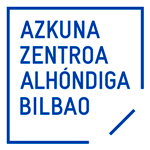
Madrid, 1983. She studied illustration and graphic design at the Escuela de Arte 10 in Madrid.
In 2004, she published her first comic and booted her professional career as a working illustrator for clients such as the New Yorker, Vanity Fair, eldiario.es or el Salto. Since the year 2016 she has collaborated in the newspaper of the City Council of Madrid, the M21 Magazine. As an activist, she presides the Illustrators Association of Madrid and promoted the Colectivo de Autoras de Cómic (Collective Authors of Comic).
Share:
Doña Concha: la rosa y la espina (Ms. Concha: the rose and the thorn) is a biographical comic about Concha Piquer who through different narrative sources seeks to understand her vital, historical, and cultural circumstances as an artist. On one side, Doña Concha is a short story that goes over the life of the Valencian from her beginnings until her success, and on the other, it is a documentary with interviews of diverse experts of the copla (a Spanish music genre with short poetic, structured and rhyming verses) and its relationship with fascism, feminine empowerment, and the LGBT.
“There is no small genre if the artist is big”, was said about Sara Montiel in El último cuplé (The last cuplé). The copla has always been considered a minor genre, a mere popular song, somewhat mediocre. And after Francoism, that didn’t change much, quite the opposite. The copla symbolized the dictatorship, the obsolete, the repression and the pain of an era. In time, some intellectuals approached it and discovered what it really was: the music of the people in pain, but above all, music of women. As Basilio Martín Patino says in Canciones para después de una Guerra (Songs for after a War, 1971): “They were songs to survive. Songs with warmth, with hope, with history, songs to overcome the darkness, the emptiness, and the fear. They were songs (…) to help us in the need to dream, and the effort to live”.
Perhaps the question should be why Piquer was chosen, explain why her and not another.
Undeniably, on the Olympus of the Spanish folklore, Concha Piquer would be the queen. Part of her talent was that she not only sang the copla, but she lived it. Her contribution went beyond. She also owns having contemporized the theatre show and contributed to the configuration of the copla, a genre that was yet to be defined and reached its end shape post-war thanks to her.
Popular art is, also, the comic. Through different interspersed narrations, the life of Concha is mixed with interviews of scholars in comic strips, with the intention of composing a testimony in comic of a very important public figure of the popular Spanish culture, a means that, in my opinion, more than composing great stories, is a very interesting tool for journalistic analysis.
The process of a graphic novel is long and consuming. Consistency is essential. To finish such an extensive project, of over 140 pages, it is necessary to enclose yourself and binge-work. That was not a problem on my behalf, I came to Rome knowing that I was to confine myself from the first day. My objective was to try and finish by spring and enjoy the city with the arrival of the warm weather, but COVID-19 changed everything.
Living that experience in the Academy was not the best way to enjoy the residence-grant, but it was to live historical circumstances in a privileged spot that not only transformed our projects, but also transformed us as persons. And confinement taught us many things, but above all, it served to take care of us. I believe that in such complex circumstances, the fact that the fourteen persons (without counting the felt absences) sharing the same space generated very deep bonds of fellowship, demonstrates, not only our grand human quality, but also that, indeed, the Board made no mistake.
I tried to continue looking at Rome as if it was October when the confinement was over. I tried to pay attention to some detail, some light, something to calm me. I tried to experiment the same sensation of when I observe the sea, but instead of it bringing me back to the certainty of the waves, Rome gave me church bells and the squawks of sea gulls. To be able to look from the Gianicolo over this ocean of domes, helps me recuperate the sensation of being beyond the walls of my studio. With that look, that also builds my world, many things have changed in my work.
Doña Concha advanced quickly throughout the months of confinement, and I took advantage of the circumstances trying to explore new ways as to where to express my work, like paint or print. The confinement served to work until exhaustion, learning much from my colleagues. The truth is I didn’t know where this was leading, I don’t know if I would end up painting more or making more prints, but I believe it’s interesting to have a childish curiosity once again, that creative yearning that saves us many times, as artists, it takes us out of our darkness, and it also protects us. I personally give thanks for having been able to have the energy to exorcize the negative that we lived those months, and, although many objectives were not reached, I take with me the utter importance that culture has in the salvation of the soul.
